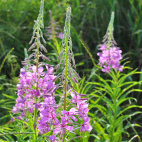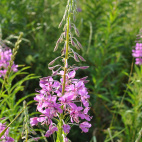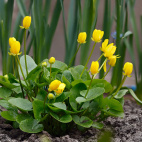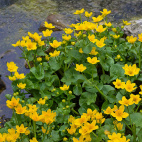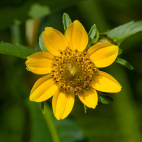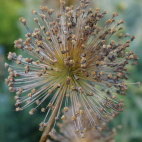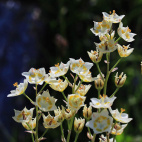Color
Availability
USDA Zone
Region
Type
Duration
Season
Germination
Soil
Sunlight
Height
Use
Narrow Your Search
Color
Availability
USDA Zone
Region
Type
Duration
Season
Germination
Soil
Sunlight
Height
Use
Wildflower Seeds - Northern Region
The Northern region is home to our Canadian friends in the eastern provinces, as well as the northern-most part of the Eastern US. This area is characterized by a long, cold winter with lots of snow, and a short humid summer that only lasts about 3 or 4 months. Most of the area is classified as a UDSA Growing Zone 4 or less, and the species that grow here have interesting ways to perpetuate themselves in spite of the short growing season. There are a lot of forests and wetlands in this region, so adequate moisture is hardly ever a problem. Look up your growing zone to make sure that the Northern wildflower seeds that you want to grow are winter hardy. Alternatively, just order annual flower seeds online so that the plant does not need to make it through the winter, but can reseed itself and come back from seed the next year.
-
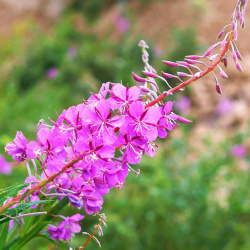 On Sale!
Fireweed Seeds
Epilobium angustifolium
A symbol of the Alaska and Yukon region, these brilliant pink blossoms also light up the prairie. The slightly spicy petals can be used to flavor wildflower honey, candy, ice cream, or jelly.Quick View$3.96 Pkt - $240.00 / Oz
On Sale!
Fireweed Seeds
Epilobium angustifolium
A symbol of the Alaska and Yukon region, these brilliant pink blossoms also light up the prairie. The slightly spicy petals can be used to flavor wildflower honey, candy, ice cream, or jelly.Quick View$3.96 Pkt - $240.00 / Oz -
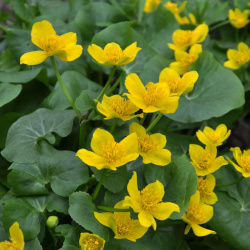 Store in the FridgeOut Of Stock
Marsh Marigold Seeds
Caltha palustris
Traditionally known as cowslips or kingcups, marsh marigolds often bring the first spring color to their native marsh. Thriving in bogs and swamps, they also make a lovely addition to a water garden.Quick View$3.75 Pkt - $200.00 / Oz
Store in the FridgeOut Of Stock
Marsh Marigold Seeds
Caltha palustris
Traditionally known as cowslips or kingcups, marsh marigolds often bring the first spring color to their native marsh. Thriving in bogs and swamps, they also make a lovely addition to a water garden.Quick View$3.75 Pkt - $200.00 / Oz -
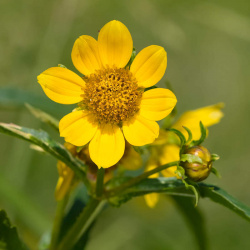 Nodding Bur Marigold Seeds
Bidens cernua
The heads of this bright yellow wildflower nod downward with time, earning its descriptive name. The wet-loving plant thrives in swamps, bogs, ponds, and riverbanks.Quick Viewx
Nodding Bur Marigold Seeds
Bidens cernua
The heads of this bright yellow wildflower nod downward with time, earning its descriptive name. The wet-loving plant thrives in swamps, bogs, ponds, and riverbanks.Quick ViewxNodding Bur Marigold Seeds
Bidens cernua
The heads of this bright yellow wildflower nod downward with time, earning its descriptive name. The wet-loving plant thrives in swamps, bogs, ponds, and riverbanks.
$3.48 Pkt - $26.00 / Oz -
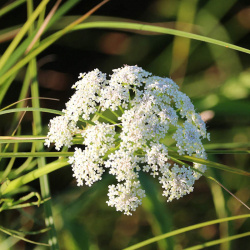 On Sale!
Tall Water Parsnip Seeds
Sium suave
A water-loving plant, this native thrives in marshy soil and standing water. The leaves are very similar to poisonous plants like Water Hemlock, but the clusters of tiny white flowers have a sweet fragrance.Quick Viewx
On Sale!
Tall Water Parsnip Seeds
Sium suave
A water-loving plant, this native thrives in marshy soil and standing water. The leaves are very similar to poisonous plants like Water Hemlock, but the clusters of tiny white flowers have a sweet fragrance.Quick ViewxTall Water Parsnip Seeds
Sium suave
A water-loving plant, this native thrives in marshy soil and standing water. The leaves are very similar to poisonous plants like Water Hemlock, but the clusters of tiny white flowers have a sweet fragrance.
$3.96 Pkt - $100.00 / Oz -
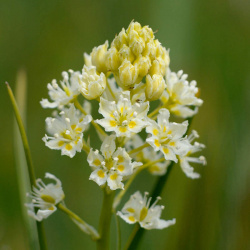 White Death Camas Seeds
Zigadenus elegans
Also known as Death Camas, every part of this native plant contains powerful poisons. The grass-like foliage bears starry white flowers above, and bulbs in the ground beneath.Quick Viewx
White Death Camas Seeds
Zigadenus elegans
Also known as Death Camas, every part of this native plant contains powerful poisons. The grass-like foliage bears starry white flowers above, and bulbs in the ground beneath.Quick ViewxWhite Death Camas Seeds
Zigadenus elegans
Also known as Death Camas, every part of this native plant contains powerful poisons. The grass-like foliage bears starry white flowers above, and bulbs in the ground beneath.
$3.75 Pkt - $96.00 / Oz
The Northern region is home to our Canadian friends in the eastern provinces, as well as the northern-most part of the Eastern US. This area is characterized by a long, cold winter with lots of snow, and a short humid summer that only lasts about 3 or 4 months. Most of the area is classified as a UDSA Growing Zone 4 or less, and the species that grow here have interesting ways to perpetuate themselves in spite of the short growing season. There are a lot of forests and wetlands in this region, so adequate moisture is hardly ever a problem. Look up your growing zone to make sure that the Northern wildflower seeds that you want to grow are winter hardy. Alternatively, just order annual flower seeds online so that the plant does not need to make it through the winter, but can reseed itself and come back from seed the next year.




